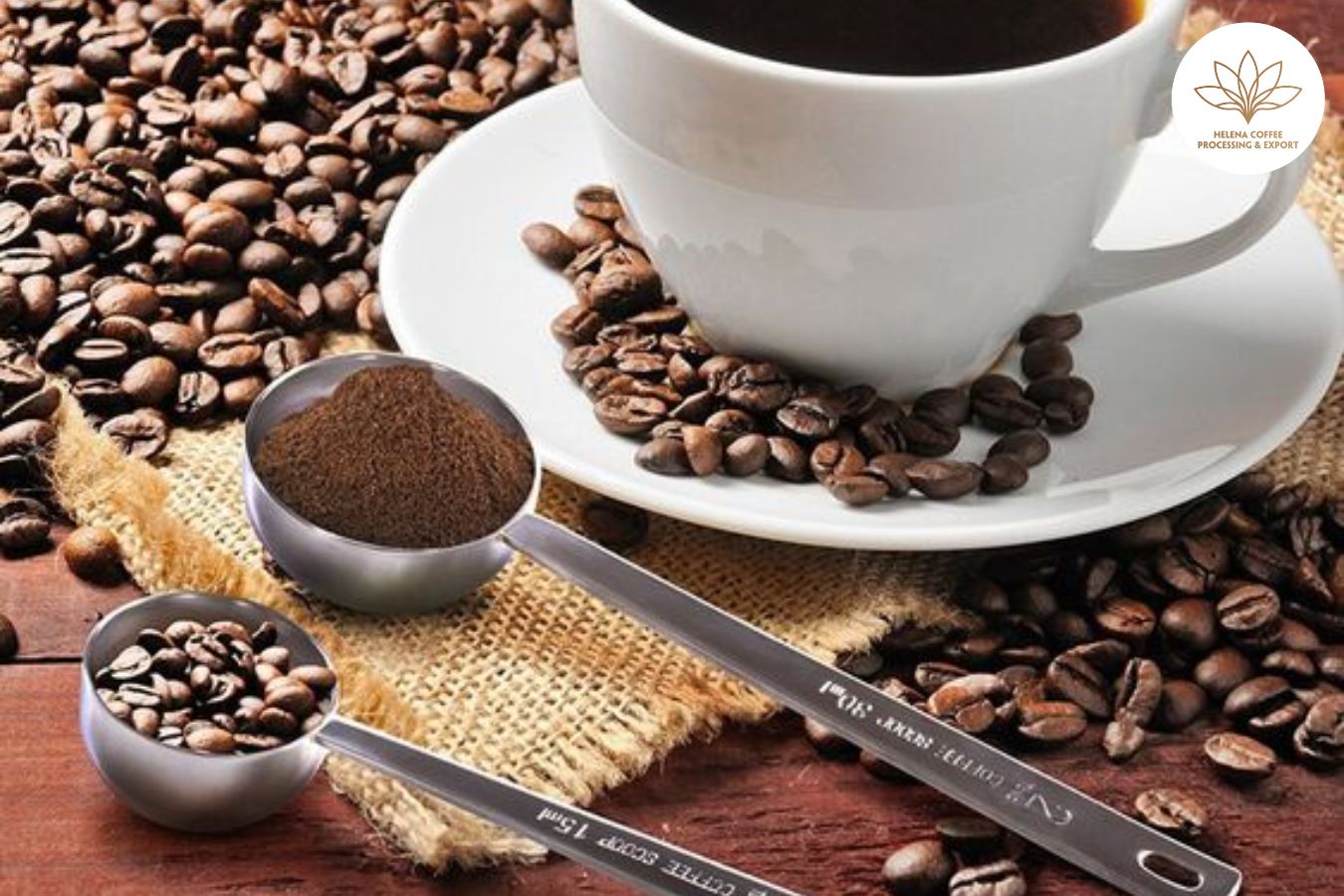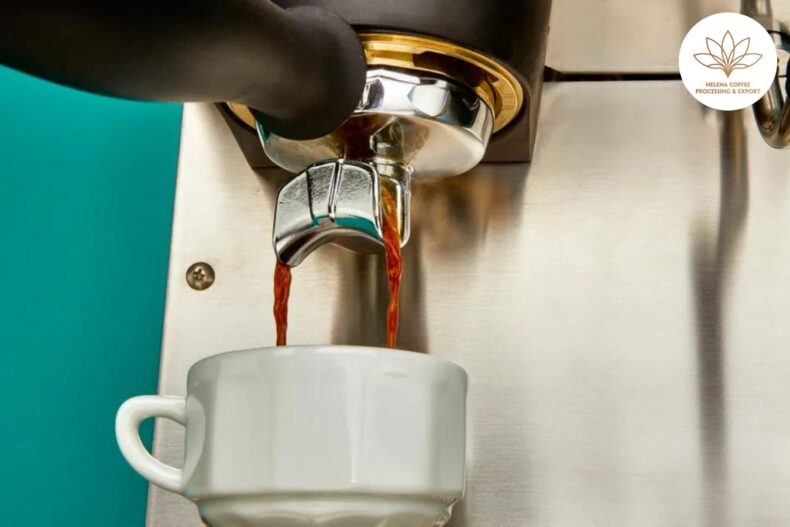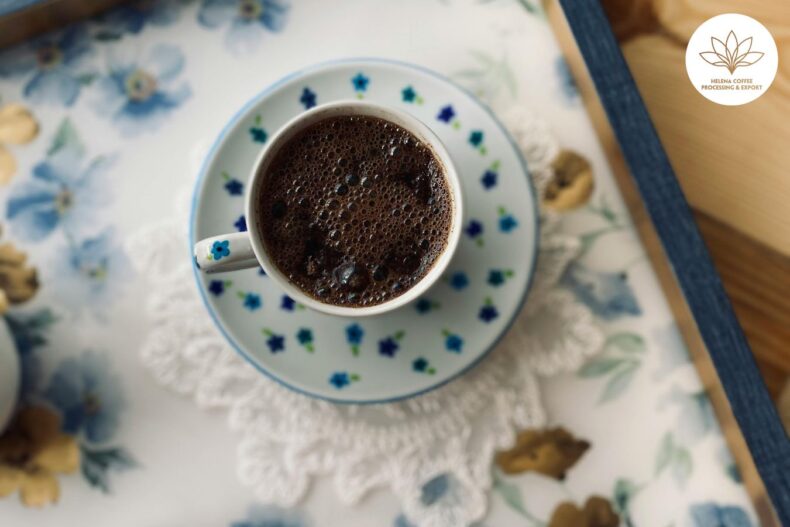
What is better suited for espresso: Given the multiple options of beans available today in terms of fermentation, benefit processes, varieties and origins, it is natural that many baristas and roasters wonder which are the ideal ones to obtain a good espresso.
In this scenario, the main question is whether it is more advisable to use single-origin beans or blends , that is, coffee mixtures that can be of different processes, varieties, origins or even qualities.
To find out what some coffee professionals think about this topic, I spoke with Luisa Quintero, former Colombian roasting champion, with Steven Arévalo, barista and roaster, and with Felipe Pinzón, experience director of a bar in Bogotá. Read on to find out what they told me.
What characteristics should a coffee have to extract a good espresso ?
The main thing for a good espresso , what is better suited for espresso: beyond specific characteristics in the coffee, is the quality of the raw material, says Steven Arévalo, roaster and barista at Café Amor Perfecto .
For her part, Luisa Quintero, roaster at Campesino Coffee , states that “regardless of the coffee process, the most important thing is that it must be very sweet, that the acidity during the roasting process is lower and that one can develop more sugars than acidity.”
Precisely, in many coffee shops it is possible to see that they use the same coffee for espresso and for filters. Consequently, as Luisa explains, espresso results in a very acidic coffee and many people find it difficult to drink it. On the contrary: “when they are very sweet, very balanced coffees, with very clean finishes, that makes people learn to drink more espresso .”
Felipe Pinzón, from his experience at the Libertario Coffee Roasters bar , what is better suited for espresso: points out that they are looking for a coffee that in its cupping characteristics has a fairly high profile in notes, that is very clean and easy to understand. Likewise, they seek homogeneity in terms of size to ensure that the coffee roast for espresso is continuous and homogeneous, that is, that it is easy to calibrate for baristas in stores.
The single origin Espresso challenge
What is better suited for espresso: If you think carefully, extracting a consistent espresso throughout the year is a big challenge, both for roasters and baristas, because climatic and water conditions, the aging of the plants year after year, among other factors, affect the result. final in cup.
Although it is possible to maintain an excellent level of extraction and roasting technique, and the machines in good condition and calibration, being faithful to what the terroir offers means that the espresso obtained from a single origin varies in flavor, aroma and body. .
For example, Luisa says that in the Nariño area, in Colombia, you can find coffees that are too acidic due to the volcanic soils, so using one for an espresso is very complex. In that case, what she recommends is to make a mixture to obtain a more stable flavor.
In turn, Felipe explains that coffee growers try to maintain the same profile and quality of coffee all the time but that is affected by climate change, the economy and sustainability. “Not only as a store but as a company we are concerned that we cannot maintain a coffee profile all the time. “For us it is much more important to work with different farms, that we can help them maintain that profile when making a blend.”
Myth or reality: is single-origin espresso more bitter?
There is a deep-rooted myth among some end consumers that is based on believing that an espresso extracted from single-origin beans will be more bitter than one obtained from a blend; However, Luis affirms that if the coffee is well roasted and well stabilized, whether a blend or a single origin, it should taste very good.
On the other hand, Steven maintains that it is a baseless myth. “A very clear proof is the global competitions: the majority of competitors switched from espresso blends , since 2008, to single-origin coffees. What is better suited for espresso: First we said that it was a production from a single country, then we began to identify departmental production and we are to the point where we practically say the specific part of the farm where it was grown.”
In this context, furthermore, traceability began to gain more strength and importance. Therefore, he believes that if a single-origin espresso is bitter, it is not because of the coffee itself but because there is some flaw in the preparation or roasting.
Mixtures or blends for espresso : yes or no?
Faced with the inevitable question about espresso blends , Luisa confesses that she really likes single-origin coffee because it can enhance a geography, that is, everything that is around that variety; However, the mixtures help to drink various coffees and enhance their flavor.
“With a single origin, you use it and try to get it ready for espresso but when you make the blend , you form a flavor. For example, if I want my espresso to taste a little like dark chocolate with a hint of fruit, a juicy citrus acidity, a creamy body, a very clean finish, then I look for coffees that have those notes, I do the roast and I start creating it,” points out. That, precisely, is the advantage of espresso blends , having the possibility of creating a drink with a wide range of flavors that suits a specific type of customer.
“In the mixes, what we actually do is look for a profile to maintain in all the stores. Beyond having a blend that is perfect all the time, what we seek at Libertario is to maintain a complete profile expression all the time and for that we work with different coffee growers,” says Felipe.
Consequently, What is better suited for espresso: they create a blend that allows them to have consistency throughout the year. Something that is difficult for specialty stores when working with coffee growers and the harvest.
Communication between producer, roaster and barista
The lack of harmony between what the barista does and what the roaster and producer do can decrease the quality of the espresso that the end customer receives. What is better suited for espresso: In general, as in other links in the chain, the most important thing is communication and feedback between the parties. What is better suited for espresso: In this regard, Steven states: “all coffees can be very expressive in espresso , all without exception, the difference is that each one will give you a completely different sensory experience. That’s the question: what do you want to offer the client?
Luisa agrees and believes that the most important thing is teamwork. “As a roaster, you always have to be hand in hand with the barista and know which audience it is for and calibrate between the two. What is better suited for espresso: Many times it happens that the roaster arrives until he delivers the coffee to the barista and from then on the barista must defend himself as best he can.
So who makes that connection between the producer, what is better suited for espresso: the roaster, the barista and the customer? For Felipe, this relationship has to focus on one factor: what experience do we want to give the customer when he drinks an espresso ? “I think there should be a third party that is in charge of giving those guidelines and positioning knowledge of the farm, the roast you want to have, the expression and what the preparation is like in the store.”
Errors when selecting coffee for espresso
What is better suited for espresso: from his experience, Felipe warns about certain common mistakes when selecting beans for espresso : for example: “we try to make things more complex that, normally, we shouldn’t make more complex. We look for very expressive and complex flavors in terms of notes and when the customer goes to try it, he does not even understand the reason for those notes.”
What is better suited for espresso, his is particularly relevant because, yet, consumers do not have the knowledge and education to understand the added value that roasters and baristas often seek to give to preparations. Additionally, another mistake that Felipe highlights is looking for profiles with a fairly high acidity and not remembering that the acidity is extracted very easily when preparing an espresso . What is better suited for espresso, For Luisa, a common mistake is not letting the beans settle after the processes and using them immediately to extract an espresso . Consequently, “there is no stabilization, neither in green nor tan.” What is better suited for espresso:
In that context, she recommends that the roaster and barista taste the coffee to determine which day the espresso is good. “It’s a team effort because many times people buy roasted coffee but the roaster doesn’t know what the coffee is for,” she says.
What is better suited for espresso: “There is a very common roast here, which is the omni roast , they use it for everything and I am not in favor because for espresso I use some parameters, for filtering I use others. Here it is not common for stores to have their own roasters, so there are large roasters that do maquila processes but one always tries to develop the coffee for something specific. It happens due to ignorance of the barista and the roaster but I think that solving it is a joint effort.”
Finally, based on the experience of those interviewed, it is clear that there is no single possibility for espresso . What is better suited for espresso: The selection of coffee, whether single origin or a blend, will depend on the cup profile you want to offer, the end customer and the raw material itself. What is better suited for espresso, What is really important ends up being how the work is coordinated between the different actors in the value chain to guarantee the quality of the preparation that will reach the consumer.
FAQS:


